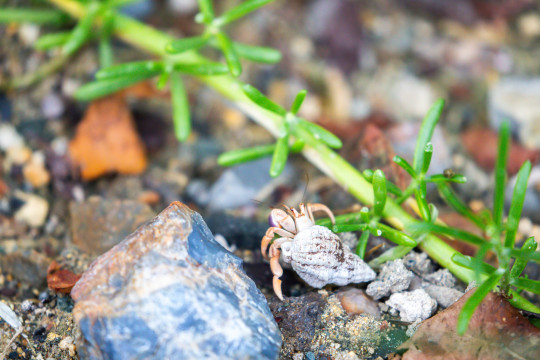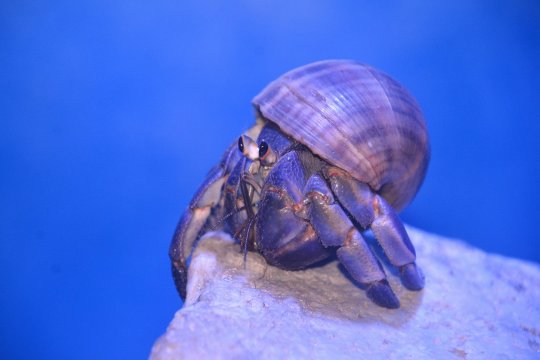#Coenobita
Explore tagged Tumblr posts
Text
Dionysus attempts to hog the wheel from Ouroboros and eats shit instead (not clickbait)
18 notes
·
View notes
Text
Isopod check!
#hermit crabs#animals#crustacean nation#hermit crab#exotic pets#hermit crabs rule#hermit crabs vacation#hermit crab tip#hermit crab art#land hermit crabs#hermit crab tank#hermit crab life#hermitcrabs#hermit crab shell#hermit crab lover#hermit crab facts#hermit crab supplies#hermit crab shop#hermit crabs of instagram#landhermitcrabs#coenobita#cutepets#cute animals#pets#pet#exotic animals#art#reptiles#aquarium#aquariums
26 notes
·
View notes
Text
Coenobita Brevimanus

Meet the Indonesian hermit crab!! While they may look similar to other species of terrestrial hermit crab, they have one distinct feature; that incredible pincer! All hermit crabs have one large mating pincer and one small, however the Indo crab takes it to a new extreme! The mating pincer is extremely large, short, and round. Even their name, brevi- meaning short and -manus meaning hand, describes their epic feature. Indos are one of the larger species of terrestrial hermit crabs, capable of reaching leg-spans of 6 inches.
Unlike other terrestrial hermit crabs which stick near the beaches, Indo crabs are normally found under the leaves and logs of the forest floor, only returning to the ocean to mate or occasionally feed.
#hermit crab#coenobita brevimanus#marine biology#exotic pets#pets#hermies#look at this gorgeous gent
84 notes
·
View notes
Photo




(via Japanese Blueberry Hermit Crab (Coenobita Purpureus) for Sale | My Home Nature)
1 note
·
View note
Text




Coenobita purpureus has found itself a nice print to hide in...
Hermit crab, origami, one square sheet of paper
#mine#origami#hermit crab#the print is of Sakuma Morimasa by Utagawa Kuniyoshi#and this hermit crab model is by Pei Haozheng#i love this little crab even if he betrayed me many times bc his face ended up looking so cute and polite.#this specific specie always look a bit put upon in every photo....
789 notes
·
View notes
Text


Caribbean hermit crabs (Coenobita clypeatus) By: Fredric L. Frye From: Captive Invertebrates 1992
#hermit crab#crustacean#arthropod#invertebrate#1992#1990s#Fredric L. Frye#Captive Invertebrates (1992)
146 notes
·
View notes
Text

By coenobita at iNaturalist, CC BY 4.0
91 notes
·
View notes
Text

Caribbean land hermit crab (Coenobita clypeatus) on Cabo Rojo, Puerto Rico
17 notes
·
View notes
Text

crab of the day is...
the strawberry hermit crab (coenobita perlatus)
fun fact: they are sometimes kept as pets!
#although it's not recommended to have them as pets! it can reduce their lifespan significantly!!#crab of the day#crab#crabs#strawberry hermit crab#hermit crab#crabposting#🍓#strawberry#wholesome
20 notes
·
View notes
Note
for the purposes of this blog do hermit crabs count as crabs?? because if so. Coenobita Purpureus, the Okinawan blueberry hermit crab
my profile picture is a hermit crab so i would sure hope they count lol (i also establish rules about what i count as a crab in my pinned post if anyone hasnt read that)
the okinawan blueberry hermit crab!! what a delightful friend. i will share a blueberry pie with them.

look at them. do they not deserve a delicious blueberry pie.
#official crab ask#this is an ask about crabs#the crab speaks#you guys should read my pinned post its funny. i think im funny at least. not always but sometimes. including in my pinned post crab rules.
37 notes
·
View notes
Text


Captain Tarriel Eleonora Corvinius' trophies from a hunting expedition on Ranur Major that was being attacked by a minor hive fleet designated Coenobita by the Magos Biologis accompanying her. The head of Carnifex was presented to her by Uraess, her sslyth bodyguard. It is rumored that she later rewarded him handsomely for it. It is also rumoured that the expedition had other motivations as well, something about gathering fresh biological matter for various, possibly proscribed, genetical experiments conducted onboard the Captain's ship. The planet, and the Ranur system itself, was later spared annihilation by the combined efforts of Navy, Guard and Space Marine forces.
***
A gift for a @norkoartstuff and his Rogue Trader OC that took far longer to do than I had perhaps anticipated.
The shields were probably the biggest hassle. It took me more times than I would like to admit to get those just right, and even then the one for the warrior didn't end up being the shape I had originally intended for it. If I were to make more of them I'd probably just get them printed and painted faux wood instead. Would saved me a lot of grief for sure. Or befriend someone with the proper tools than just a figure saw and some sandpaper.
In contrast the painting went off without a hitch, following the Blue Coconut Crab paint scheme video. Mainly because I had the paints for it. Even if I did end up buying some synthetic brushes for it, also never really did get the correct paint consistency down so they got a bit uneven. I think I did mess up the washa little, both in terms of application and mixing. One thing is for sure, I would not do this scheme for a complete army. That'd drive me bonkers. Even if I still have some bug juice wash left over.
#painting warhammer#warhammer 40000#warhammer 40k#warhammer#wh40kpaint#wh40k#tyranids#warmongers#Rogue Trader
99 notes
·
View notes
Text
Since my zoology posts have recently been gaining traction on my account, I'd like to take a leap and publish an old video that I believe supports my hypothesis that arthropods (and potentially all invertebrates) are capable of entering states of REM sleep, and therefore have the capability to dream. I've had this hypothesis since I've recorded this footage of my old centipede, Tambora Naga (Scolopendra subsinepes) in June of 2023, but was met with skepticism and doubt... until this study was recently popularized by TikTok and Instagram users who are fascinated with jumping spiders.
In this footage, Tambora can be seen asleep twitching and moving several of her appendages: her forcipules (often called the 'jaws'), the tip of her antennae, and even a fierce kick from one of her back legs. This can be compared to behaviors in terrestrial vertebrates - organisms that are capable of REM sleep (and dreaming) - where limbs may move and/or curl.
Now almost two years after this footage was taken, I've finally successfully transferred to a 4-year university where I am completing my bachelors of the sciences and potential masters in environmental biology to study the intelligence and psychology of arthropods and invertebrates. I hope that continued research of my own and others can help prove the theory that these animals have much more going on behind the scenes.
I am also working to study venomous invertebrates and the medical potential of animals such as centipedes and scorpions, but that is besides the point.
Tambora unfortunately passed away of a presumed age-related death, and since then, I have owned a handful of centipedes but have failed to document this exact behavior. I'm currently trying to replicate this behavior in Madagascar hissing roaches (Gromphadorhina portentosa) and Purple pincher hermit crabs (Coenobita clypeatus).
#oc#entomology#zoology#insects#pets#arachnids#arthropods#myriapods#centipede#science#biology#invertebrate#bugblr#insect#bug#arachnid
57 notes
·
View notes
Text
“All they know is how they were treated in the time they spent with you & that changed my life….” ❤️
#hermit crabs#animals#crustacean nation#hermit crab#exotic pets#hermit crabs rule#hermit crab tip#land hermit crabs#hermit crab tank#hermit crab life#hermitcrabs#hermit crab shell#hermitcrab#coenobita#crustacean care#crustaceannation#crustaceans#crustacean#exotic animals#animal lover#reptiles#aquariums#small pets#spoiled pets#petcare#happy pets#love animals#small animals#animal encounters#animal facts
3 notes
·
View notes
Text

a personal shot of two members of my colony
4 notes
·
View notes
Text


Fishuary Day #09 & #10 - Manta Ray and Hermit Crab! I know I'm a little behind on the daily prompts but I plan to keep going! The Hermit Crab is based on a species named the Coenobita Lila, my version came out a bit too bright but they have very nice purple-pink coloring and are very cute
Thanks to @fish-daily for the prompts! 𓆝 𓆟 𓆞 𓆝 𓆟
#fishuary2024#manta ray#hermit crab#art#my works#digital art#crabs#fish#ibispaint art#ibispaintx#artists on tumblr#ive accepted that im behind on doing these daily so im just gonna post them whenever i have them done since they are fun to make#the colors on the hermit crab came out a little weird but the manta ray is pretty cute i think
53 notes
·
View notes
Text


nails are making me wanna color my crab like this little guy (Coenobita purpureus) instead of the classic red one....
7 notes
·
View notes